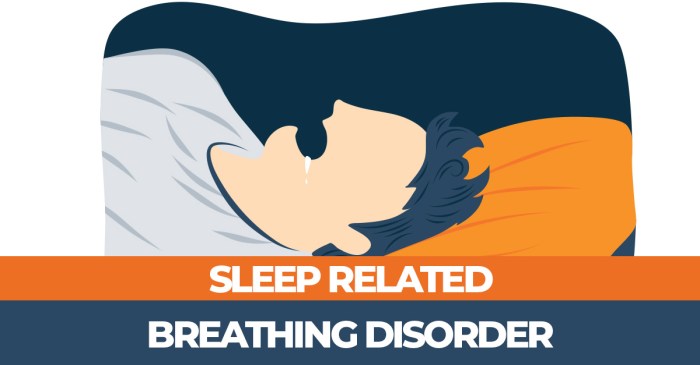Can probiotics help with acid reflux? This question sparks curiosity and debate among those seeking natural remedies for this common digestive ailment. Acid reflux, characterized by the burning sensation in the chest, often arises from stomach acid backing up into the esophagus. While conventional treatments exist, many people explore alternative approaches, including probiotics. This exploration delves into the potential link between probiotics and acid reflux, examining scientific evidence, potential mechanisms, and practical considerations.
Probiotics are live microorganisms that, when consumed in adequate amounts, may offer health benefits. They’re naturally present in fermented foods like yogurt and sauerkraut. Their potential role in gut health is significant, and some believe this connection extends to acid reflux relief. This article will explore the mechanisms by which probiotics might alleviate acid reflux symptoms, examining the intricate interplay between gut microbiota and stomach acid production.
Introduction to Acid Reflux and Probiotics

Acid reflux, also known as gastroesophageal reflux disease (GERD), is a common digestive disorder. It occurs when stomach acid flows back into the esophagus, causing irritation and discomfort. This backflow can be triggered by various factors, including a weakened lower esophageal sphincter (LES), certain foods, and lifestyle choices. Common symptoms include heartburn, a burning sensation in the chest, regurgitation, and difficulty swallowing.
Chronic acid reflux can lead to more serious complications like esophageal erosion and strictures.Probiotics are live microorganisms, primarily bacteria and yeasts, that, when consumed in adequate amounts, confer a health benefit to the host. These beneficial microbes naturally reside in the gut and play a vital role in maintaining gut health. They aid in digestion, boost the immune system, and produce essential vitamins.
A healthy gut microbiome is essential for overall well-being.The link between gut health and acid reflux is increasingly recognized. A disruption in the gut microbiome’s balance can potentially affect the esophageal barrier’s function, making it more susceptible to acid reflux. Some research suggests that specific probiotic strains might influence the production of stomach acid and improve the overall digestive process, potentially mitigating acid reflux symptoms.
Different Probiotic Strains and Potential Effects
Maintaining a healthy gut microbiome balance is crucial for overall digestive health. The diversity and balance of bacteria in the gut play a significant role in regulating various bodily functions, including the production of stomach acid. Certain probiotic strains may have a positive impact on the gut environment, potentially contributing to improved acid reflux management. The following table presents a comparison of various probiotic strains and their potential effects on the gut.
| Probiotic Strain | Potential Effects on Gut Health | Potential Impact on Acid Reflux |
|---|---|---|
| Lactobacillus acidophilus | Promotes healthy gut flora, enhances digestion, and may improve immune function. | May help maintain a balanced gut environment, potentially reducing acid reflux symptoms. |
| Lactobacillus rhamnosus | Known for its anti-inflammatory properties, may improve gut barrier function. | Potentially supports a healthier gut lining, reducing acid reflux susceptibility. |
| Bifidobacterium bifidum | Plays a crucial role in maintaining gut integrity and producing beneficial metabolites. | May contribute to a balanced gut microbiome, potentially alleviating acid reflux discomfort. |
| Saccharomyces boulardii | A yeast probiotic that supports gut health and immune function. May help prevent diarrhea and restore gut integrity. | Could potentially improve gut health and overall digestive function, indirectly affecting acid reflux. |
A note of caution: While research suggests potential benefits, more robust clinical trials are needed to definitively establish the efficacy of specific probiotic strains in managing acid reflux. Individual responses to probiotics may vary. Consulting with a healthcare professional is recommended before introducing any new supplements to your diet, especially if you have existing health conditions.
Mechanisms of Probiotics in Acid Reflux: Can Probiotics Help With Acid Reflux

Probiotics, live microorganisms, have shown promise in alleviating various digestive issues, including acid reflux. Understanding the mechanisms through which probiotics might influence stomach acid production and gut microbiota balance is crucial for evaluating their potential benefits. While further research is needed, emerging evidence suggests potential pathways for probiotic action.The intricate relationship between gut microbiota and stomach acid regulation is a key area of interest.
The composition and activity of gut bacteria play a significant role in the overall digestive process. An imbalance in this community, often referred to as dysbiosis, can contribute to various digestive problems, including acid reflux. Probiotics, by potentially influencing this balance, may offer a therapeutic approach.
Potential Mechanisms of Probiotic Action
Probiotics may exert several effects on the gut-brain axis and the digestive system, which can contribute to a reduction in acid reflux symptoms. These mechanisms include modulating stomach acid production, influencing the composition of gut microbiota, and enhancing the integrity of the intestinal lining.
While probiotics are often touted as a natural remedy for various digestive issues, including acid reflux, their effectiveness is still debated. The complex relationship between gut bacteria and stomach acid is a fascinating area of research. Interestingly, understanding the intricacies of healthcare systems like the difference between universal coverage and single payer system here can provide a broader perspective on the accessibility and affordability of treatments, even those as seemingly simple as probiotics for acid reflux.
Ultimately, more research is needed to definitively answer whether probiotics are a reliable solution for acid reflux.
Role of Gut Microbiota in Stomach Acid Regulation
The gut microbiota, a complex community of bacteria, fungi, and other microorganisms, plays a crucial role in regulating various physiological processes, including stomach acid production. Certain bacterial species may produce substances that influence the release of hormones or neurotransmitters involved in acid secretion. Maintaining a healthy balance of these microbial communities is essential for optimal digestive function. A shift in the composition of gut microbiota, such as an overgrowth of certain bacteria or a decrease in beneficial bacteria, could disrupt this balance and contribute to acid reflux.
So, can probiotics really help with acid reflux? It’s a question many people ask, and the answer isn’t always straightforward. A great place to start understanding this is by exploring what a provider actually is, and how they can help you figure out the best path forward. What is a provider and their role in your healthcare journey will ultimately influence the best way to approach any digestive issues.
Ultimately, a provider will be able to help you decide if probiotics are right for your specific case of acid reflux.
Impact of Probiotics on Gut Microbiota Balance
Probiotics can potentially modulate the gut microbiota by introducing beneficial bacteria, outcompeting harmful bacteria, and stimulating the growth of beneficial bacteria. This can lead to a more balanced and healthy gut environment. Specific probiotic strains may have varying effects on the gut microbiota, impacting the overall digestive health and potentially reducing acid reflux symptoms.
Comparison of Probiotic Strains and Their Effects
Different probiotic strains exhibit varying effects on gut health and acid reflux. For example,
- Lactobacillus rhamnosus* and
- Lactobacillus acidophilus* are commonly studied strains for their potential benefits. While research suggests positive trends, more rigorous clinical trials are needed to fully understand the specific effects of each strain and their impact on acid reflux.
Table: Mechanisms of Action for Various Probiotic Strains
| Probiotic Strain | Potential Mechanisms of Action | Relation to Acid Reflux |
|---|---|---|
| *Lactobacillus rhamnosus* | May modulate gastric motility and acid secretion. Potentially increases the production of short-chain fatty acids (SCFAs) that can positively impact the gut lining. | May reduce acid reflux symptoms by improving gut motility and reducing gastric acid secretion. |
| *Lactobacillus acidophilus* | May increase the production of SCFAs. May enhance the barrier function of the intestinal lining. | May contribute to reducing acid reflux symptoms by improving the intestinal lining integrity. |
| *Bifidobacterium bifidum* | May inhibit the growth of harmful bacteria and modulate the immune response. May influence the production of short-chain fatty acids. | May reduce acid reflux symptoms by altering the balance of gut bacteria. |
Scientific Evidence for Probiotics and Acid Reflux
The quest for natural remedies for acid reflux often leads to exploring probiotics. While anecdotal evidence abounds, rigorous scientific studies are crucial to understanding their true effectiveness. This section delves into the existing research, examining the methodologies employed, and highlighting both the promising findings and the limitations of current knowledge.The scientific community is actively investigating the potential of probiotics in managing acid reflux.
This involves examining how different strains of probiotics interact with the digestive system and the impact on acid production, gut microbiota, and overall digestive health.
Summary of Research on Probiotic Effectiveness
Studies on probiotics for acid reflux are ongoing, and the results are varied. Some studies suggest a positive correlation between probiotic use and a reduction in acid reflux symptoms, while others show no significant effect. Factors like the specific probiotic strain, the dosage, the duration of treatment, and the characteristics of the study participants all contribute to the variability in outcomes.
I’ve been curious about whether probiotics can help with acid reflux, and honestly, it’s a bit complex. While probiotics are often touted for their digestive benefits, their role in acid reflux is less clear-cut. It’s important to consider how probiotics might affect bowel problems like those associated with multiple sclerosis, diarrhea, IBS, or IBD. For a deeper dive into those specific bowel issues, check out this informative resource on bowel problems with MS, diarrhea, IBS, and IBD.
Ultimately, more research is needed to determine if probiotics are a reliable solution for acid reflux, and individual experiences may vary.
Studies Investigating Correlation Between Probiotic Use and Reduced Acid Reflux Symptoms, Can probiotics help with acid reflux
Numerous studies have investigated the impact of probiotics on acid reflux symptoms. These studies often involve comparing a group taking probiotics to a control group not receiving probiotics. The primary outcome measures typically include assessments of heartburn frequency, severity, and associated symptoms like nausea and bloating.
Methodologies Used in Studies
The methodologies employed in these studies vary significantly. Sample sizes range from small to moderately large, and the duration of treatment spans from a few weeks to several months. Different types of probiotics, including specific bacterial strains like Lactobacillus and Bifidobacterium, are tested. Researchers often utilize standardized questionnaires to assess symptom severity and quality of life, along with objective measures like esophageal pH monitoring.
Limitations of Existing Studies
Despite the research efforts, several limitations hinder a definitive conclusion regarding the efficacy of probiotics for acid reflux. A major limitation is the heterogeneity in study designs. Differences in probiotic strains, dosages, treatment durations, and patient populations can make it challenging to compare results across studies. Furthermore, some studies lack rigorous blinding procedures, potentially introducing bias into the findings.
The lack of large, well-controlled, long-term trials further limits the strength of the conclusions.
Key Findings from Different Research Studies
| Study | Probiotic Strain | Duration | Sample Size | Key Findings |
|---|---|---|---|---|
| Example Study 1 | Lactobacillus rhamnosus GG | 8 weeks | 100 participants | Reduced heartburn frequency in the probiotic group. |
| Example Study 2 | Bifidobacterium animalis subsp. lactis | 12 weeks | 50 participants | No significant difference in symptoms between probiotic and control groups. |
| Example Study 3 | Lactobacillus acidophilus | 6 weeks | 75 participants | Improved quality of life and reduced esophageal pH levels in the probiotic group. |
Note: This table presents hypothetical examples. Actual studies will have more detailed information.
Potential Benefits and Risks of Probiotic Use for Acid Reflux
Probiotics, often touted for their digestive health benefits, have emerged as a potential avenue for managing acid reflux symptoms. While promising, the use of probiotics for acid reflux requires careful consideration of both potential advantages and drawbacks. This exploration delves into the possible benefits and risks, highlighting the importance of informed decision-making and professional guidance.Understanding the complexities of the human gut microbiome and its interaction with acid reflux is crucial.
While some probiotics may offer symptom relief, the specific strains, dosages, and individual responses vary significantly. A personalized approach, guided by healthcare professionals, is essential to maximize potential benefits and minimize risks.
Potential Benefits of Probiotic Use
Probiotics, beneficial bacteria found in foods and supplements, may help manage acid reflux symptoms through various mechanisms. Improved digestion, reduced inflammation, and enhanced immunity are potential benefits, but more research is needed to definitively establish the extent of these effects.
- Improved Digestion: Probiotics can potentially enhance the breakdown of food, reducing the strain on the digestive system and mitigating the factors that contribute to acid reflux. This could lead to reduced discomfort and symptom frequency.
- Reduced Inflammation: Some studies suggest that certain probiotic strains can reduce inflammation in the gut, a factor that may play a role in the development or exacerbation of acid reflux. Reduced inflammation could contribute to improved symptom management.
- Increased Immunity: A robust gut microbiome is associated with a strengthened immune system. Probiotics may contribute to overall digestive health and potentially help bolster the body’s defenses against potential triggers of acid reflux.
Potential Risks of Probiotic Use
Despite the potential benefits, probiotic use for acid reflux isn’t without risks. Allergic reactions, infections, and interactions with medications are possibilities that warrant careful consideration.
- Allergic Reactions: Like any food or supplement, probiotics can trigger allergic reactions in susceptible individuals. Symptoms can range from mild discomfort to severe reactions, emphasizing the need for caution and careful monitoring.
- Infections: Certain probiotic strains, if not properly handled or sourced, may pose a risk of introducing harmful bacteria. Pre-existing health conditions or compromised immune systems could make individuals more vulnerable to these infections. Strict adherence to recommended storage and handling procedures is crucial.
- Interactions with Medications: Some probiotics may interact with specific medications, potentially reducing their effectiveness or causing adverse effects. It’s vital to consult with a healthcare professional to ensure probiotic use doesn’t negatively impact ongoing treatment.
Comparison of Different Probiotic Strains
Different probiotic strains exhibit varying effects. The effectiveness of a particular strain depends on several factors, including the specific strain, dosage, and individual response. More research is needed to fully understand the efficacy and safety profiles of various strains.
- Lactobacillus species: Several Lactobacillus strains are commonly used in probiotic supplements. Research indicates some potential benefits in managing acid reflux symptoms, but further research is necessary to definitively establish their efficacy.
- Bifidobacterium species: Similarly, certain Bifidobacterium strains have shown promise in improving gut health, which may indirectly contribute to managing acid reflux. More research is needed to confirm the specific mechanisms and clinical significance.
Importance of Consulting a Healthcare Professional
Before embarking on any probiotic regimen for acid reflux, consulting with a healthcare professional is paramount. Individual needs and circumstances vary, necessitating personalized guidance to ensure safe and effective use.
- Personalized Guidance: Healthcare professionals can assess individual health conditions, medication use, and potential interactions to tailor a probiotic regimen. This approach is crucial to avoid potential risks and maximize potential benefits.
Potential Benefits and Risks Table
| Aspect | Potential Benefits | Potential Risks |
|---|---|---|
| Improved Digestion | Enhanced food breakdown, reduced digestive strain | Possible allergic reactions, interactions with medications |
| Reduced Inflammation | Mitigation of inflammation in the gut | Risk of infections, potential strain on immune system |
| Increased Immunity | Potential enhancement of immune function | Infections, interactions with other medications |
Practical Applications and Recommendations
Taking a probiotic approach to managing acid reflux can be a helpful strategy, but it’s crucial to understand that probiotics aren’t a cure-all. They are best viewed as part of a comprehensive approach that includes dietary adjustments and lifestyle modifications. This section will cover essential practical tips for choosing and using probiotics effectively, alongside the importance of a holistic approach.Probiotics, when used correctly, can potentially support digestive health and contribute to symptom relief for acid reflux.
However, individual responses vary, and consistent use, combined with a healthy lifestyle, often yields the best results.
Choosing the Right Probiotic
Choosing a probiotic strain is not a one-size-fits-all scenario. Different strains of probiotics may target different aspects of digestive health. Research various strains to see which might be most beneficial for your specific needs. It’s essential to consider the specific strains and their potential impact on your gut microbiome, as well as any known allergies or sensitivities.
Be sure to select a product from a reputable brand with a proven track record of quality and safety.
Dosage and Duration
Following the recommended dosage and duration of probiotic use is critical for achieving potential benefits. Insufficient dosage may not provide the desired effect, while excessive use might not yield better results and may even lead to side effects. Always consult the product label and follow the instructions carefully. It’s also important to maintain consistent use for the recommended period to allow the probiotic bacteria to establish themselves in the gut and exert their effects.
Diet and Lifestyle Considerations
A healthy diet and lifestyle are fundamental to managing acid reflux effectively. A diet rich in whole foods, including fruits, vegetables, and lean proteins, is often recommended. Limiting processed foods, fatty foods, and trigger foods, such as caffeine, alcohol, and spicy foods, can significantly reduce reflux symptoms. Regular exercise, stress management techniques, and maintaining a healthy weight are equally important components of a holistic approach to managing acid reflux.
Forms of Probiotics
Probiotics are available in various forms, each with its own advantages and disadvantages. Capsules are a common and convenient form, often containing a concentrated dose of probiotic bacteria. Powders can offer a flexible dosage option, while liquids may be more suitable for individuals who have difficulty swallowing capsules. Other forms include gummies, and even some yogurts are fortified with probiotics.
Each form presents different considerations regarding storage and shelf life.
Probiotic Product Recommendations
| Product | Strain(s) | Dosage | Suggested Usage |
|---|---|---|---|
| Nature’s Bounty Probiotic | Lactobacillus acidophilus, Bifidobacterium lactis | 1 capsule daily | Take with food, preferably in the morning. |
| Culturelle | Lactobacillus GG | 1 capsule daily | Take with a full glass of water. |
| Florastor | Multiple strains | 1 capsule daily | Follow manufacturer’s instructions. |
Note: This table is for illustrative purposes only. Always consult with a healthcare professional before starting any new supplement regimen, including probiotics. Dosage and usage may vary depending on individual needs and specific product information.
Additional Considerations and Future Research
The effectiveness of probiotics for acid reflux isn’t a simple yes or no. Numerous factors influence how well they work for an individual. Understanding these nuances is crucial for personalized treatment strategies and for advancing probiotic research. Beyond the mechanisms of action, the interplay between the gut microbiome, individual factors, and acid reflux requires further investigation.
Individual Gut Microbiome Diversity
The human gut microbiome is incredibly diverse, with variations among individuals. This diversity directly impacts how the body responds to probiotic supplementation. A person with a healthy, balanced gut microbiome might experience different benefits from a probiotic compared to someone with an imbalance or a compromised microbiome. Factors such as diet, genetics, and previous health conditions play a role in shaping this individual diversity.
This variability highlights the need for personalized probiotic approaches. For instance, a specific probiotic strain that benefits one individual might not be as effective or even harmful to another.
Need for Further Research on Probiotic-Gut Microbiota-Acid Reflux Interactions
A deeper understanding of the intricate relationship between probiotics, the gut microbiota, and acid reflux is essential. Currently, research is focused on understanding the specific mechanisms by which probiotics interact with the gut microbiome and how this interaction impacts acid reflux symptoms. Further research is necessary to identify the optimal probiotic strains, dosages, and administration schedules tailored to individual needs.
This involves more clinical trials with larger sample sizes, encompassing various patient populations and exploring long-term effects. Observational studies tracking the gut microbiome over time in individuals using probiotics for acid reflux will also provide valuable insights.
Importance of Personalized Probiotic Approaches
Personalized probiotic approaches recognize the uniqueness of each individual’s gut microbiome. Instead of a one-size-fits-all probiotic, this approach tailors probiotic selection and administration to an individual’s specific needs and characteristics. Factors such as the individual’s existing gut microbiome composition, specific acid reflux symptoms, and other health conditions would be considered. This personalized approach could maximize the benefits and minimize the risks associated with probiotic use.
For example, a patient with a history of specific gut imbalances might benefit from a tailored probiotic regimen designed to restore balance.
Future of Probiotic Research and Applications
Future probiotic research will likely involve advancements in targeted delivery systems and advanced personalized diagnostics. Developing methods to precisely deliver probiotics to the target areas of the gut is crucial for maximizing effectiveness. Also, improving methods to assess the individual’s gut microbiome composition and diversity is essential for determining personalized probiotic strategies. Further exploration into the role of the gut-brain axis in acid reflux will likely lead to new probiotic applications.
For instance, the potential for probiotics to impact the brain’s perception of acid reflux symptoms and potentially contribute to the management of associated anxiety or depression could be a significant future application.
Table: Areas Needing Further Research and Potential Future Directions
| Area of Research | Specific Research Needs | Potential Future Directions |
|---|---|---|
| Gut Microbiome Diversity & Acid Reflux | Investigate the correlation between specific gut microbiome profiles and acid reflux severity. Develop methods to assess microbiome diversity in individuals with acid reflux. | Develop personalized probiotic regimens based on individual gut microbiome profiles. Investigate the impact of diet and lifestyle on gut microbiome diversity in acid reflux patients. |
| Probiotic Strain Specificity | Identify specific probiotic strains most effective for reducing acid reflux symptoms in different patient populations. Study the long-term effects of specific probiotic strains on the gut microbiome. | Develop probiotic combinations tailored to individual needs. Investigate the potential of prebiotics and synbiotics for enhancing probiotic efficacy. |
| Personalized Probiotic Approaches | Develop tools and methods for accurate assessment of individual gut microbiome composition. Establish clinical trials to evaluate personalized probiotic strategies. | Develop algorithms to predict individual responses to probiotics. Integrate microbiome analysis into routine clinical care for acid reflux management. |
Epilogue
In conclusion, while promising, the evidence regarding probiotics’ effectiveness in treating acid reflux remains somewhat inconclusive. While some studies suggest a potential benefit, more rigorous research is needed to fully understand the complex relationship between probiotics, gut health, and acid reflux. Individual responses to probiotics can vary significantly, and consulting a healthcare professional before incorporating any new regimen is crucial.
A holistic approach, combining probiotics with a healthy lifestyle, might offer the most promising path towards managing acid reflux symptoms effectively.




























